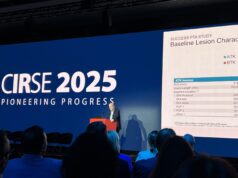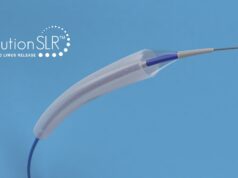
Reva Medical, a company developing bioresorbable polymer technologies for vascular applications, has announced that its Motiv bioresorbable scaffold is the first drug-eluting bioresorbable scaffold to receive CE mark approval for treatment of below-the-knee peripheral artery disease.
Late last year, Reva announced its plans to expand use of itstechnology in peripheral artery disease. The approval of MOTIV delivers that milestone and for the first time brings bioresorbable technology to this patient population.
Motiv is made from Tyrocore, Reva’s proprietary polymer designed specifically for vascular scaffolds. Tyrocore is inherently radiopaque, making Motiv visible under x-ray to ensure accurate placement in the artery. The company will identify over the next few months select centers to assess the product’s performance, inform future product development activities and determine its complete commercial strategy in peripheral vascular applications. Reva expects Motiv’s first use in patients to be in late 2018 or early next year.
“Reva did not just achieve its own milestone with CE mark of Motiv, we achieved a therapeutic milestone for patients with critical limb ischaemia (CLI),” said Reggie Groves, Reva’s CEO. “Tyrocore and our polymer technology have a broad range of therapeutic applications. This is our first step beyond the coronary arteries, and we look forward to bringing a new treatment option to peripheral artery disease patients and their physicians.”
The most common indication for patients receiving below-the-knee (BTK) revascularisation is CLI. If left untreated, CLI can progress to severe infection and amputation. Patients with CLI below the knee are a substantially underserved population. It is estimated that approximately 1.5 million people are affected by CLI, but only 150,000 interventional revascularization procedures are performed every year.
Research has shown that early-stage intervention is cost-effective and efficacious compared to late stage treatments like amputation. These interventions are intended to restore blood flow to the blocked artery in order to reduce pain and save the limb. Drug-eluting bioresorbable scaffolds such as Motiv present a significant opportunity to improve the treatment of patients suffering from CLI because of the potential to extend drug delivery and to enable retreatment without the risks associated with metal stents.













